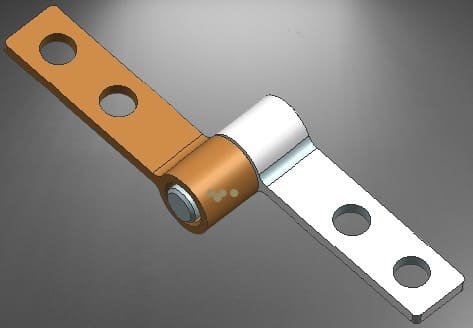Ever struggled with cabinet doors slamming shut or laptop screens wobbling? Traditional hinges often fail to control movement precisely. Torque hinges solve this by adding adjustable resistance – let me show you how they work.
A torque hinge uses internal friction mechanisms to control rotational movement. Unlike standard hinges, it provides consistent resistance to hold positions, prevent sudden movements, and reduce wear on connected components.

But not all torque hinges work the same way. Their performance varies based on design and application needs. Let’s break down three critical aspects every engineer should know before selecting one.
How Does a Torque Hinge Work?
Leading paragraph:
Frustrated by lids that won’t stay open or close too forcefully? Standard hinges lack controlled motion. Torque hinges fix this through calibrated friction – here’s the engineering behind it.
Snippet paragraph:
Torque hinges generate resistance via friction discs or springs. As the hinge rotates, these components create adjustable tension, allowing precise control over movement speed and position holding.
Key Working Principles
-
Friction-Based Resistance
- Two metal plates compress friction material (e.g., polymer washers)
- Adjustable via screws or pre-set during manufacturing
-
Durability Factors
- Material pairing (stainless steel vs aluminum)
- Lubrication type (grease, dry-film)
- Cycle life testing (10,000+ cycles for premium models)
What is a Constant Torque Hinge?
Tired of hinges losing tension over time? Variable resistance causes inconsistency. Constant torque hinges maintain uniform performance – discover what makes them unique.
Constant torque hinges deliver uniform resistance throughout their rotation range. They use specialized spring systems instead of friction materials, ensuring consistent performance even after repeated use.

Critical Design Features
-
Spring Mechanisms
- Clock springs or spiral torsion springs
- Pre-load adjustments for target torque
-
Advantages Over Standard Models
- No friction wear
- Consistent performance in temperature extremes (-40°C to 120°C)
How to Select a Torque Hinge?
Leading paragraph:
Overwhelmed by 50+ hinge variants? Choosing wrong costs time and money. Follow this 4-step framework to match hinges to your project’s exact needs.
Select torque hinges based on load capacity, motion range, environment, and lifecycle requirements. Always request torque curves and material certifications from suppliers.
Selection Checklist
-
Load Calculations
- Measure door/cover weight
- Calculate required torque:
Torque (Nm) = Weight (kg) × 9.8 × Distance from pivot (m)
-
Environmental Factors
- IP ratings for dust/water resistance
- Temperature tolerance
- Chemical exposure (cleaning agents, oils)
-
Certification Requirements
- ISO 9001 for quality systems
- REACH/RoHS compliance for electronics
- MIL-STD-810G for military/aerospace
Conclusion
Torque hinges transform uncontrolled movement into precision motion. Whether upgrading consumer products or industrial systems, selecting the right hinge type ensures reliability and user satisfaction. Need a custom solution? Contact our engineers for free torque calculations.

